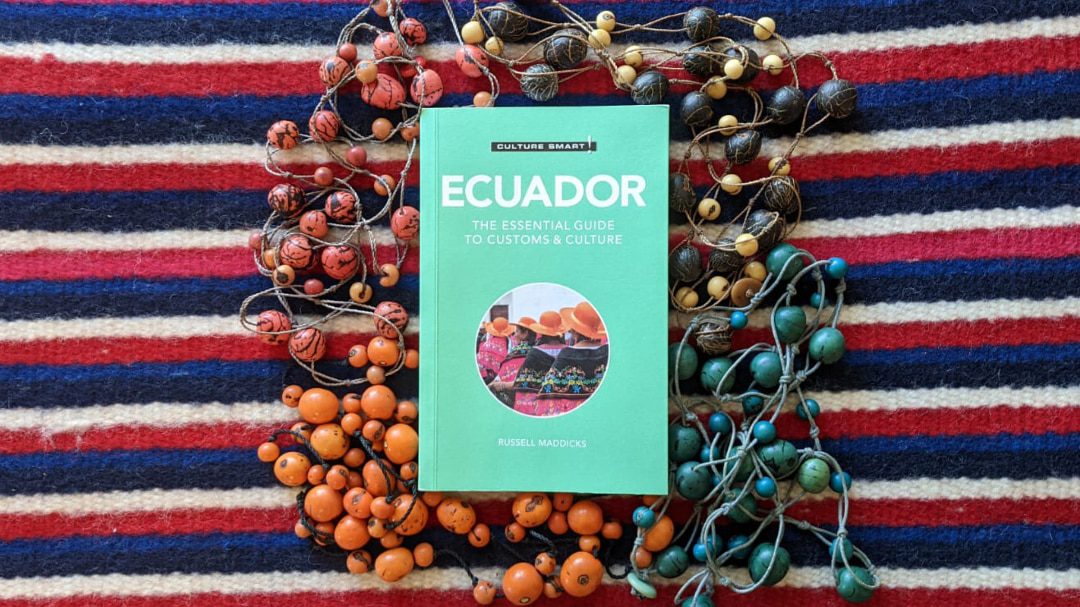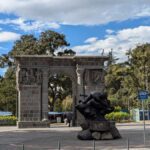Having lived in six countries and worked in more than forty, I can tell you that knowing when to shake a hand, kiss a cheek, or pay for a drink can be the difference between a wonderful experience and a night in a Bolivian jail.
Something A Little Different
That’s why when Culture Smart UK sent us a copy of the new edition of Ecuador – The Essential Guide to Customs and Culture by Russell Maddicks and asked us to take a look, I was more than game. I’ve never done a review of a travel guide but was interested in giving it a try.
During the review process, I came to see that there are common things I like to see in a travel book and, being ex-military, made a little acronym to keep track of them. That acronym is DICES:
| D | detailed |
| I | interesting |
| C | current |
| E | engaging |
| S | surprising |
So let’s see how “Ecuador – The Essential Guide to Customs and Culture” dices up!
Detailed
If you are a details person, there’s much to like about this book. There are call-outs within the text that give additional tidbits about things like cuy, Ecuadorian idiom, agave-based drinks, flirting, and more. I especially liked Chapter 3, Customs and Traditions, and Chapter 6, Time Out, for the in-depth coverage of some of our favorite things about Ecuador. For example, the sections on festivals and food showed that Mr. Maddicks not only has experience in Ecuador but also has a great appreciation for what makes Ecuador such a great place to visit.
He also reminded us of one of our favorite family stories when he highlighted “sigue no más” in the language section. This phrase literally translates as “don’t move” or “don’t continue.” Well, in Ecuador, it means “keep going” or “next in line” as our oldest son found when he arrived at Ecuadorian passport control for the first time. He didn’t move the first three times the immigration agent called it out. We laugh about it now, but it was a great example of how Spanish isn’t necessarily the same everywhere in Latin America. You won’t make that mistake after reading this book.
Interesting
Even after living in Quito for three years, traveling all over the country, and getting to know many Ecuadorians, I found myself saying “huh, I didn’t know that” multiple times. Mr. Maddicks’ history section was excellent and illustrated the roots of the rivalry between the capital city, Quito, and the commercial center, Guayaquil, better than any other text I’ve read. He also shows how the rivalry led to the assassinations of two early Ecuadorian presidents, something not discussed at any of the museum exhibits I’ve seen in country.
For those of you not interested in history, don’t worry. There’s plenty of great stuff here for you too. His descriptions of Ecuadorian festivals and how they mix Indigenous and Catholic traditions are excellent. This blending is especially true in communities in the Andes which were much more influenced by the Incans than the coastal peoples. His information about the distinct Afro-Ecuadorian culture in Ecuador reminds me that I did not get the chance to experience this and it piqued my interest.
Differences between cultures are always interesting to me. They are one of the reasons I enjoy travel and Ecuador is full of them. Mr. Maddick’s examples of Ecuadorian differences are myriad and helpful. Two of his best examples are expectations of punctuality and willingness to directly say “no” or “I don’t know” to requests. As a North American, both of these are ingrained behaviors for me, especially professionally. This is not the case in Ecuador, as I found over the course of my first-year in-country. Knowing what to expect will give readers a big advantage and avoid much frustration.
Current
This edition of the book, published in April 2022, updates the 2015 version which won a Gold Prize at the Pearl of the Pacific International Travel Journalism Awards at the Ecuadorian International Tourism Fair. While culture is a slow-changing thing, the revisions in this version are helpful in showing the economic and political changes due to COVID-19 and a new, more, conservative government.
Engaging
I enjoyed this book very much. The mixture of broad overviews of Ecuadorian culture combined with very useful and interesting details was very engaging. It is apparent Mr. Maddicks’ has much experience with and enjoyment of Ecuadorian culture. His writing style was a huge plus as well. The prose flowed effortlessly and was a breeze to read. The fact that the book is only 200 pages makes this the ideal preparation for a visit to Ecuador and gives the reader tools to avoid many misunderstandings.
Surprising
I was surprised I enjoyed this book so much. The only other culture books I have read about Ecuador were dry, academic texts. This is much more accessible and useful. Even though I am familiar with many of the cultural and social aspects explored, I was never bored and never disagreed with how Mr. Maddicks addressed these issues.
So, what’s the result?
Culture Smart’s “Ecuador – The Essential Guide to Customs and Culture” dices up like an onion in Julia Child’s kitchen, just about perfectly. This is an outstanding book for anyone planning a visit to Ecuador and who wants to be comfortable engaging with people. It is a must-read for those in the business, diplomatic, military, or expat communities engaging with Ecuadorians. It’s not an exaggeration to say that these 200 pages would have saved me at least a year of trial and error learning how to live and work in Ecuador.














0 comentarios